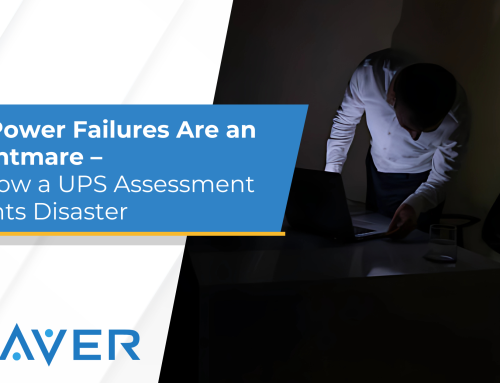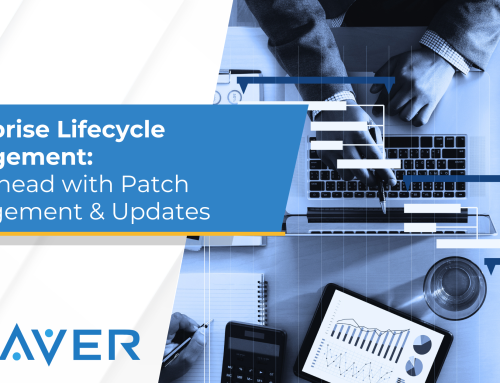Learn how to enhance enterprise cybersecurity with Zero Trust Architecture and protect your network from modern threats.
In an era where cyber threats are growing more sophisticated and relentless, enterprises must stay ahead of the curve to safeguard their valuable data and resources. Traditional perimeter-based security models are no longer enough, leaving organizations searching for innovative solutions. Enter Zero Trust Architecture, a game-changing approach that provides robust protection against both internal and external threats by challenging the outdated notion of inherent trust within a network. We’re here to equip IT professionals with the knowledge and tools to successfully implement Zero Trust Architecture, fortifying their enterprise’s cybersecurity and network security for the challenges of today and beyond.
Understanding Zero Trust Architecture
Zero Trust Architecture is a transformative security model that shatters the conventions of traditional network security by embracing the mantra “never trust, always verify.” By discarding the obsolete idea of automatic trust within a network, Zero Trust demands validation for every user, device, and application before granting access to sensitive data or resources. This forward-thinking approach is built upon three core principles that redefine enterprise security:
- Least privilege access: Limiting user and device access to the bare minimum necessary for performing tasks, effectively shrinking the potential attack surface.
- Microsegmentation: Fragmenting the network into smaller, secure segments to impede unauthorized access and restrict lateral movement of potential attackers within the network.
- Continuous monitoring and analytics: Actively observing network traffic and user behavior to swiftly detect and respond to emerging threats in real-time.
By understanding and applying these key principles, IT managers can revolutionize their organization’s cybersecurity strategy with Zero Trust Architecture, creating a more resilient and adaptable defense against modern cyber threats.
Zero Trust Architecture vs. Traditional Network Security Models
In the past, traditional network security models, such as perimeter-based security, have focused on defending the outer boundaries of a network. Once users or devices gained access to the network, they were often granted extensive freedom to explore resources. This approach has exposed organizations to vulnerabilities, including insider threats and the risk of cybercriminals moving laterally within the network.
Zero Trust Architecture challenges the status quo by considering no user or device inherently trustworthy, regardless of its location or status within the network. By continuously verifying access requests and enforcing stringent access controls, Zero Trust Architecture offers a more robust defense against both internal and external threats.
The comparison between Zero Trust Architecture and traditional network security models highlights the paradigm shift in modern cybersecurity, where trust is no longer a given. Instead, IT managers must adopt a proactive and vigilant approach to protect their organization’s sensitive data and resources from ever-evolving threats.
The Advantages of Adopting Zero Trust Architecture
Incorporating Zero Trust Architecture into an enterprise’s cybersecurity strategy brings a wealth of advantages that not only strengthen defenses but also future-proof the organization against evolving threats. The key benefits of adopting Zero Trust Architecture include:
- Improved security posture: Zero Trust Architecture significantly reduces the risk of unauthorized access and data breaches by verifying every access request and enforcing least privilege access.
- Enhanced compliance: Implementing Zero Trust Architecture can help organizations meet regulatory requirements and industry standards for data protection and privacy.
- Scalability and flexibility: Zero Trust Architecture can adapt to the changing needs of an organization, such as remote work, cloud adoption, and increased reliance on IoT devices, providing consistent protection across various environments.
Adopting Zero Trust Architecture enables enterprises to revolutionize their cybersecurity approach, enhancing the protection of their valuable data and resources while staying agile in the face of an ever-evolving threat landscape.
Core Components of Zero Trust Architecture
Identity and Access Management (IAM)
Effective Identity and Access Management (IAM) is crucial for implementing Zero Trust Architecture. IAM involves managing and securing digital identities, authentication, and authorization for users, devices, and applications within an organization. By integrating robust IAM practices into Zero Trust Architecture, enterprises can experience the following enhancements:
- Multi-factor authentication (MFA): MFA adds an additional layer of security by requiring users to provide two or more forms of identification before accessing resources. This helps ensure that only authorized users can access sensitive data while reducing the risk of unauthorized access due to compromised credentials.
- Role-based access control (RBAC): RBAC streamlines access management by assigning permissions based on predefined user roles. This approach simplifies the process of granting and revoking access rights while adhering to the principle of least privilege.
- Context-aware access policies: Incorporating contextual information, such as user location, device type, and security posture, into access policies allows for more granular control and adaptive security measures based on the specific risk profile of each access request.
- Single sign-on (SSO): SSO allows users to authenticate with a single set of credentials for multiple applications, enhancing not only user experience but also reducing the likelihood of password fatigue and the risk of unauthorized access due to weak or compromised credentials.
Integrating these modern IAM practices into your Zero Trust Architecture plays a pivotal role in safeguarding your organization’s sensitive resources. By meticulously verifying user and device authenticity, you effectively minimize the chances of unauthorized access and significantly mitigate the risk of data breaches.
Microsegmentation
Microsegmentation is the process of dividing the network into smaller, isolated segments to minimize the potential attack surface. By implementing microsegmentation, organizations can enforce stricter access controls and prevent unauthorized users from moving laterally within the network. Key considerations for microsegmentation include:
- Mapping network traffic: Analyze network traffic patterns to gain insights into how users and devices interact with resources, helping you design efficient segmentation strategies.
- Creating security zones: Organize resources and workloads into security zones based on their sensitivity and function, applying tailored access controls for each zone.
- Network segmentation enforcement: Deploy network security tools such as firewalls, virtual LANs (VLANs), and software-defined networking (SDN) to enforce segmentation policies and control traffic between segments.
Network Security Policies
Developing comprehensive network security policies is crucial for implementing Zero Trust Architecture. These policies should include rules and requirements for access control, data classification, encryption, and incident response. Key elements of network security policies in a Zero Trust Architecture include:
- Access control policies: Define granular access control policies based on user roles, device types, and security contexts to ensure that only authorized entities can access specific resources.
- Data classification and handling: Implement data classification policies to identify and categorize sensitive information, applying appropriate security controls to protect each data type.
- Encryption policies: Enforce data encryption policies to secure sensitive information both at rest and in transit, reducing the risk of data breaches and unauthorized access.
- Incident response and remediation: Establish a well-defined incident response plan to detect, contain, and remediate security incidents, minimizing their impact on the organization.
Continuous Monitoring and Analytics
Implementing continuous monitoring and analytics allows organizations to detect potential threats and respond to security incidents promptly. Advanced tools such as security information and event management (SIEM) and user and entity behavior analytics (UEBA) can help IT managers identify and remediate suspicious activities. Key aspects of continuous monitoring and analytics in Zero Trust Architecture include:
- Real-time network visibility: Gain real-time visibility into network traffic and user behavior to detect anomalies and potential threats.
- Automated threat detection and response: Leverage advanced analytics and machine learning techniques to automatically detect and respond to threats, reducing the time to remediate incidents.
- Integration with security tools: Integrate continuous monitoring and analytics solutions with existing security tools, such as firewalls, intrusion detection systems (IDS), and endpoint protection platforms (EPP), to create a cohesive security ecosystem.
Enterprise Cybersecurity Challenges and Zero Trust Architecture
Evolving Threat Landscape
The threat landscape continues to evolve, with cybercriminals using increasingly sophisticated tactics to breach enterprise networks. Zero Trust Architecture helps organizations stay ahead of these threats by requiring continuous verification and restricting access to sensitive resources.
Remote Work and Bring Your Own Device (BYOD) Policies
The rise of remote work and BYOD policies has expanded the attack surface for enterprises. Zero Trust Architecture mitigates these risks by enforcing strict access controls and continuously monitoring the activities of remote users and devices.
Cloud Adoption and its Impact on Network Security
As enterprises increasingly adopt cloud services, the traditional network perimeter becomes less relevant. Zero Trust Architecture provides a security model that can adapt to the changing needs of an organization, ensuring consistent protection across on-premises, cloud, and hybrid environments.
Implementing Zero Trust Architecture in Enterprises
Assessing Current Security Posture
Before implementing Zero Trust Architecture, IT managers must assess their organization’s existing security posture. This involves identifying vulnerabilities, evaluating current security measures, and determining the organization’s risk tolerance.
Developing a Strategic Implementation Plan
- Setting goals and objectives: Define clear goals and objectives for implementing Zero Trust Architecture, such as reducing the risk of data breaches or meeting regulatory requirements.
- Identifying stakeholders and obtaining buy-in: Engage stakeholders from different departments to ensure a successful implementation. This may include C-suite executives, IT staff, and end-users.
- Defining key performance indicators (KPIs) and success metrics: Establish measurable KPIs and success metrics to track the progress and effectiveness of the Zero Trust Architecture implementation.
Deploying Zero Trust Architecture Solutions
- Weaver Technologies: a leading solution provider: Partner with Weaver Technologies to gain access to cutting-edge Zero Trust Architecture solutions tailored to your enterprise’s needs.
- Integrating with existing security infrastructure: Integrate Zero Trust Architecture solutions with your current security infrastructure, such as firewalls, intrusion detection systems, and VPNs, to create a cohesive security ecosystem.
- Training and support for IT managers and staff: Provide training and support to IT staff to ensure a smooth transition to Zero Trust Architecture and help them manage the new security measures effectively.
Monitoring and Continuous Improvement
Monitor the performance of the Zero Trust Architecture implementation using the defined KPIs and success metrics. Continuously improve the security measures based on feedback and evolving threat landscapes.
Final Thoughts
Implementing Zero Trust Architecture in your enterprise is a strategic decision that can significantly enhance your organization’s cybersecurity and network security posture. By understanding its core principles and components, IT managers can effectively deploy Zero Trust Architecture solutions and protect their networks from modern threats. Partnering with a trusted solution provider like Weaver Technologies can further streamline this process and ensure a successful implementation.
Ready to explore Zero Trust Architecture solutions for your enterprise? Contact Weaver Technologies to learn more about our cutting-edge offerings and how we can help you strengthen your organization’s cybersecurity posture. Reach out to our team of experts today and take the first step towards a more secure future.







